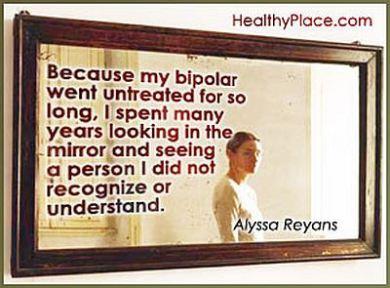
Bipolar disorder is a chronic illness with a risk of suicide that is 20 times that of the general population. Anyone that battles it will tell you it is serious business indeed. One would think then, that spotting and diagnosing bipolar disorder would be a high priority when doing a mental health assessment, yet 69 percent of people with bipolar disorder are initially misdiagnosed. But why are people with bipolar disorder misdiagnosed ? Typically, people with bipolar disorder are misdiagnosed with unipolar depression. This is likely due to the fact that people often seek treatment when they are in the depressed phase of bipolar disorder. When a person seeks help for a manic episode, bipolar disorder is much easier to spot.The trouble with misdiagnosis of Bipolar is that it leads to poor treatment that not only can be ineffective, but it can actually make bipolar worse. We know that delays in effective treatment can cause a greater risk of recurrence in the symptoms.With the delays also comes longer treatment cycles with increased treatment costs.Of course, the greatest cost may be loss of life due to the increased risk of suicide attempt due to untreated Bipolar symptoms. Types of Bipolar disorder:
Bipolar I Disorder
Bipolar I disorder is characterized by one or more manic episodes or mixed episodes (symptoms of both a mania and a depression occurring nearly every day for at least one week) and one or more major depressive episodes. Bipolar I disorder is the most severe form of the illness marked by extreme manic episodes.
Bipolar II Disorder
While bipolar I disorder is characterized by one or more manic episodes or mixed episodes and one or more major depressive episodes; bipolar II disorder is diagnosed after one or more major depressive episodes and at least one episode of hypomania, with possible periods of level mood between episodes.
The highs in bipolar II, called hypomanias, are not as high as those in bipolar I (manias). Bipolar II disorder is sometimes misdiagnosed as major depression if hypomanic episodes go unrecognized or unreported. If you have recurring depressions that go away periodically and then return, ask yourself if you have also Had periods (lasting four or more days) when your mood was especially or abnormally energetic or irritable? Were you:-
- Feeling abnormally self-confident or social?
- Needing less sleep or more energetic?
- Unusually talkative or hyper?
- Irritable or quick to anger?
- Thinking faster than usual?
- More easily distracted/having trouble concentrating?
- More goal-directed or productive at work, school or home?
- More involved in pleasurable activities, such as spending or sex?
- Did you feel or did others say that you were doing or saying things that were unusual, abnormal or not like your usual self?
If so, talk to your health care provider about these energetic episodes, and find out if they might be hypomania. Getting a correct diagnosis of bipolar II disorder can help you find treatment that may also help lift your depression.

~I was inspired to do research on this illness because recently we found out that one of my loved ones was misdiagnosed for years and is finally getting the help he needs. Much love to my family.~




